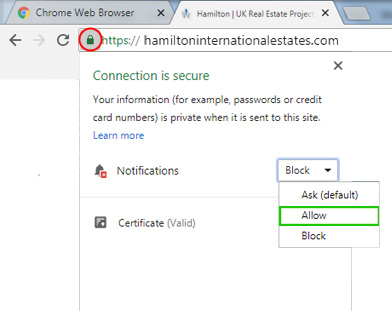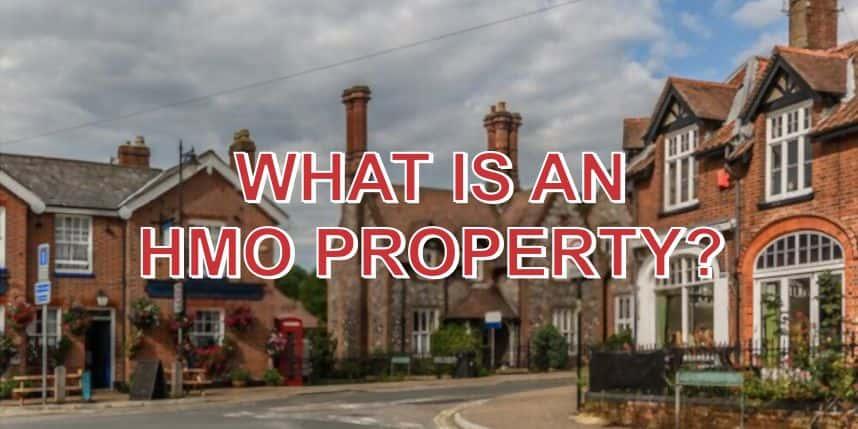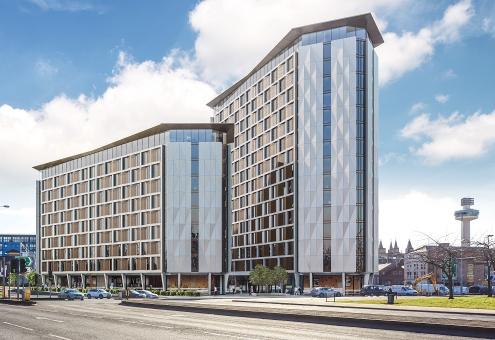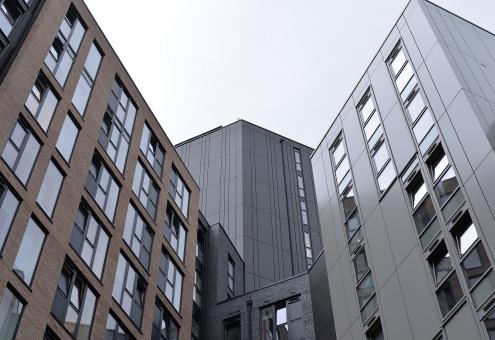What is an HMO property
16 Jul 2020
A house can be occupied by a single person or family members, or there can be families living together in one residential unit. The people living in shared accommodations can be living together like close relatives or with domestic staff who are treated as part of the family as per the terms of the contract with the person whom they are working for.
House in Multiple Occupation (HMO) is the term used for a house that is occupied by three or more unrelated people who do not form a single household. In the market, HMO mortgages have lower rates with five-year fixed products, and on a large investment, it ranges from 3.5% to 4%.
The lower rates are available at short-term deals and with smaller HMO properties. Mortgages for Business MD Steve Olejnik claimed last year, in some specific markets, such properties were able to get a yield of 9.2 percent (on average).
What is HMO?
An HMO is considered to be the main residence of a person and the only residence where the person, mainly, lives or lives as
-
Full-time students in higher education,
-
As refugees escaping domestic violence,
-
As migrants or seasonal workers,
-
Or asylum seekers.
Such a House in Multiple Occupations can be wholly or partially funded by the National Asylum Support Scheme when the resident landlord lives with three or more other people who are members of the household.
The property should be licensed if there are more than 4 people, in addition to the landlord, living in the building constructed on three or more floors.
What Is an HMO Rental Property?
Many landlords find HMO rental property as a more efficient way to run a rental portfolio. It may involve a lot of work and the opportunity to collect rent from a higher number of tenants.
It is considered an attractive rental investment because of the potential higher rental yield given by the tenants for smaller tailor-made residential spaces like a student area with extendable spaces. The tenants find it potentially attractive due to the lower rent given for a house at the desired location.
The landlords need to take care of the regulations and the setbacks like section 24 and the 3 percent stamp duty surcharge. Many seek ways to maximize the potential of such portfolios, and there are many strategies adopted by landlords to convert such properties into higher rental yields.
What Is HMO Investment Property?
An HMO investment property can be a superb asset as it gives rental yields, which cannot be achieved through standard buy to lets. It can be bought as a multi-let in the right areas to get affordable, flexible housing options.
The landlord needs to comply with legislation that came into force in March 2019 which it says that all rented accommodation must be suitable for human habitation during the period of the tenancy.
The law also provides the tenants with higher powers to hold the landlord accountable if the property has problems related to ventilation, drainage, water supply, overcrowding, or damp.
For landlords who are keen on adding to their portfolio can increase the rental yield by having HMO / MUB, which is considered to be a secure investment opportunity designed in the manner to cover the phased-in cut to mortgage interest relief and the higher cost of becoming a landlord.
After the global pandemic and the economic downturn in 2020, job loss increased the demand for low-cost housing.
Many private landlords exited social housing when the universal credit housing levels fell below the average rentals in most of the depressed areas but now, with an increase in the universal credit rates, the ability to pay directly to the landlords has increased.
Also, currently, there are many opportunities for investors to get HMO investment property at a lower price as some landlords are exiting the markets in the post-corona-virus phase.
What is an HMO Licence?
An HMO property should be licensed if it is constructed on three or more storeys and is occupied by five or more people from two or more households. The unit should be registered at the public register and licensed within the council.
To get an HMO license -
-
The suitability of the unit is ascertained by government authorities that depends on the number of occupiers,
-
The authorities check the suitability based on the number of cooking facilities, bathrooms, and toilets.
-
Also, the landlord or the managing agent of the property should have the ability to handle it.
-
They check the general suitability of the arrangement.
The mandatory HMO license conditions include the following-
-
Section 67 (1) of the 2004 Act provides that a local housing authority may impose conditions, which are related to the management, occupation, and use of an HMO license. As per section 67(3), it is mandatory for the local housing authority to increase certain conditions in the license.
-
The minimum size of sleeping accommodations does not apply to charities that provide night shelters or those who offer temporary accommodation to people suffering from mental disorders, or alcohol or drug abuse.
-
The local authorities may request to get details of the room size as mandatory for applying for the HMO license.
-
There are many other rules associated with it where the license holders who commit a crime without any reasonable excuse like permitting occupation by more persons than authorized or failing to comply with the related prohibitions can lead to an unlimited fine.
-
There may be situations where the landlord unknowingly allows a breach of the minimum sleeping room size requirement, like in conditions when the tenant has given birth to a child, and the HMO was unaware of it.
-
In such a situation, the local housing authority must allow a reasonable period for overcrowding to be remedied, and the landlord must be notified about it.
What is an HMO Housing?
HMO housing is different from standard rental property as it can provide better turnover in terms of rental income, but it requires proper tenancy documents and an efficient referencing process. To let such property, one may have to check the buy to let mortgage terms as all agreements do not allow such terms.
What is HMO in Property?
There are multiple strategies adopted by property buyers who can invest in multi-lets, mainly, to rent out some rooms or part of the property to individuals than the whole property. Such homes are suitable for students who can share them with their friends where they live together whilst they pay for each room rather than for the whole area.
If somebody targets the student market, then they should choose locations near large universities.
This is a growing sector where even if one of the tenants is late in payment of the dues, others are still paying – which avoids the situation of receiving nothing.
What Are the Rules For HMO?
The council has the legal powers to ensure the HMO rental accommodation are suitable, and they carry out routine inspections to ensure it at the time when -
-
They get information that the property is unsafe or in a state of disrepair.
-
When they get a report that the relevant housing law has been disregarded.
-
When the application is submitted to the HMO license, it is mentioned in the proactive inspection program.
The basic tests conducted by the authorities for different types of properties are
-
The standard test – In the standard test, it is seen if the building is more than one household and living accommodations are for at least two households that share the basic amenity (like personal washing facilities, cooking, and toilet) or if it lacks the basic amenity. The degree of sharing is not relevant, and there is no requirement that all the households share it.
-
There may not be any requirement for the building to be converted or adapted. The facilities apply to houses whose characteristics resemble conventional dwellings with single occupancy, but it is an HMO by virtue only of its use.
There can be units that are self-contained flats that meet the requirements like individual flats occupied by more than 5 people, and it forms one or more households, and the flat lacks the basic amenity where more than one household shares the basic amenity like toilet, kitchen or bathroom.
Such flats are required to be licensed in case they are not purpose-built situated in a block or are three or more self-contained units.
A building can meet the converted building test -
-
If it has been converted and there are one or more of the units of living accommodation that are not self-contained flats.
-
A converted building is part of the living accommodation, which has been created since the part was constructed. The house converted into bedsits can meet the test, but it could also be a family house where only a part has been converted to get separate living accommodation.
-
Such kinds of buildings may also meet the standard test in the case; it is shared by two or more households.
-
If the floor area is less than 4.64 sq. m., one may have to notify the housing authority. The floor area occupied by a person over 10 years should not be less than 6.51 sq. m., and the floor area shared by two people over 10 years should not be less than 10.22 sq. m.
-
One should comply with the rules for overcrowding, and the property should be habitable which should provide adequate space for tenants to live comfortably. The compliance obligations related to space, furniture, facilities, layout, and appliances should be met.
What Does HMO Stand for In Housing?
HMO property meaning - There are multiple criteria for defining an HMO house, and the license requirement varies depending on the location. It is necessary to know about the local rules to invest in such properties. Basically, it refers to the tenanted home that can be lived in by three or more people who share bathrooms and kitchens and are not a family.
How To Convert a Property into an HMO?
To convert into an HMO house – one should first ensure the legal aspects to get the relevant license. The rules related to the licensing were updated in October 2018 and the new rules affected over 177K additional properties.
For such properties, one requires a license for the number of tenants and basic facilities. At least one of the tenants should pay rent to make the area to be considered a large HMO house.
If somebody plans to convert the property, the place will be visited by the local authority for 5 years, which they carry out the risk assessment to identify if any issue is related to it. A house will not be allowed to be converted if there are risks like asbestos, carbon monoxide, or radiation and buy a house.
In the case of conversions
-
The spare rooms can be converted into bathrooms or receptions.
-
One may have to alter the room size.
-
One may need permission if planning major renovations, like if you want to add a garage to the living space – it may require permission.
-
One may have to get planning permission to undertake major work.
Certain terraced Victorian homes and similar spacious properties are considered ideal for such conversions. Some flats may not provide a reception or living space, and it can be a drawback.
Some points that one should remember while converting like
-
Focus on the external space as well as it appeals to long-term tenants.
-
The bathrooms and kitchen area should be redesigned and refitted with the latest types of equipment.
-
It is advised to avoid saving on furniture and items like fridges, sofas, ovens, and beds as such features can attract long-term returns.
-
The area should be appropriately designed to appear spacious for each renter.
-
The tenant prefers to move into ready-to-let properties. There should not be any repair work or renovation left on the property.
-
The council may advise providing locks for each bedroom, fire safety, and pest control treatments.
HMO Landlord Property Pros and Cons
The advantages of investing in multi-let are
-
The rent can be higher as compared to the normal three/ four / five bedroom flats. It can be three times or more than the normal rate.
-
Such homes rarely get rental void periods because even when one of the tenants moves out, the others stay back.
-
There is less exposure to arrears as one of the tenants will always be there to pay the rent.
-
There are certain tax advantages to investing in such options.
-
Such homes are liked by tenants as it offers affordable flexibility, and hence, the trends are growing in large cities where the average size of household is declining, and the population is increasing.
Drawbacks –
-
All kinds of properties cannot be converted into an HMO house.
-
If the demand for such homes is higher in a specific location, one may not be able to get them at an affordable price.
-
It can be difficult to get a mortgage for such homes, and a bigger deposit may be asked to get sanctioned for it.
The government regulations and planning requirements should be met, which are complicated. Sometimes, capital growth in such investments is not as desired as only a specific group of landlords prefer to invest in it. Not all letting agencies manage to buy to lets related to such dwellings.
The startup cost for such residential properties can be higher one may have to invest in furnishing for three families and may have to invest in fire regulations and environmental & health regulations.
Categorised in: All News












